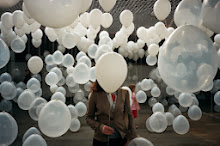I finished reading A Passage to India a few weeks back and came across this interesting blurb in the appendix:
Peter Burra's Introduction to the Everyman Edition
Perhaps it is chance, more than any peculiar devotion, that determines man in his choice of medium, when he finds himself possessed by the obscure impulse towards creation. The distinction between the functions of one art and another is not clear; they have a tendency to overlap, to merge, even to identify themselves, in a manner which prevents definition. They have one common subject for discussion - the life that is lived and known by men; and since it is not at once apparent why men who are intimately involved in living that life should desire to contemplate so immediate an experience in any remoter way, another activity (criticism), as old as themselves, has attended upon the arts from their beginning, which has constantly and variedly, but never quite satisfactorily, attempted to explain the reasons for their being. In the advanced state of everything - of life, that is, and our ideas about life - that we have achieved today, people have set themselves to define the difference between the real life which we live and the life which the arts present to us. That such a difference exists is in itself sufficient indication of how advanced we are. Various processes have led to the existence of these conditions, and the most important is the artist's practice of 'selection'. 'Most of life,' says Mr Forster, for example, 'is so dull that there is nothing to be said about it'; and even if you disagree with that - Mrs Virginia Woolf, for her part, seems to suggest that the whole of life is so significant that not one fleeting impression should be missed - the fact remains that real life is chaotic and formless, and the artist is faced with the problem of confining his impressions of that life into a space which is infinitely smaller than itself and with at least one of the dimensions removed. He has no other alternative, therefore, than to select what seem to him its most significant parts, and to arrange the chaos into some sort of an order. Inevitably the life he presents is something much neater and tidier than the diffuse reality. It is probable that most people take the impressions afforded by art - especially the novel - so much for granted that they sincerely believe life itself to be quite a neat and tidy event and suffer from shock or melancholy if something occurs to disturb their belief. Paradoxically, the more actually 'like' life a work of art is, the more nonsensical it appears to them. One of the most interesting aims of modern writers and artists has been the attempt to dispel this illusion of life's tidiness.
